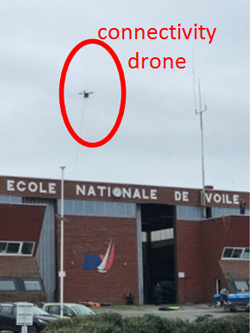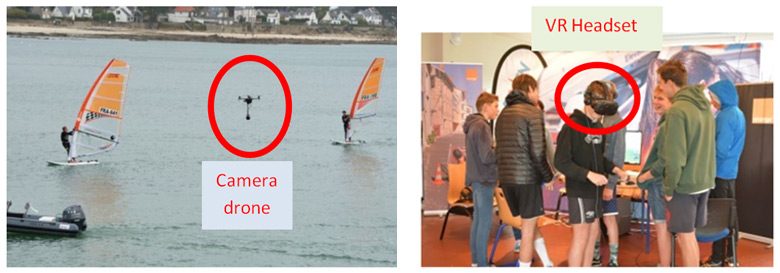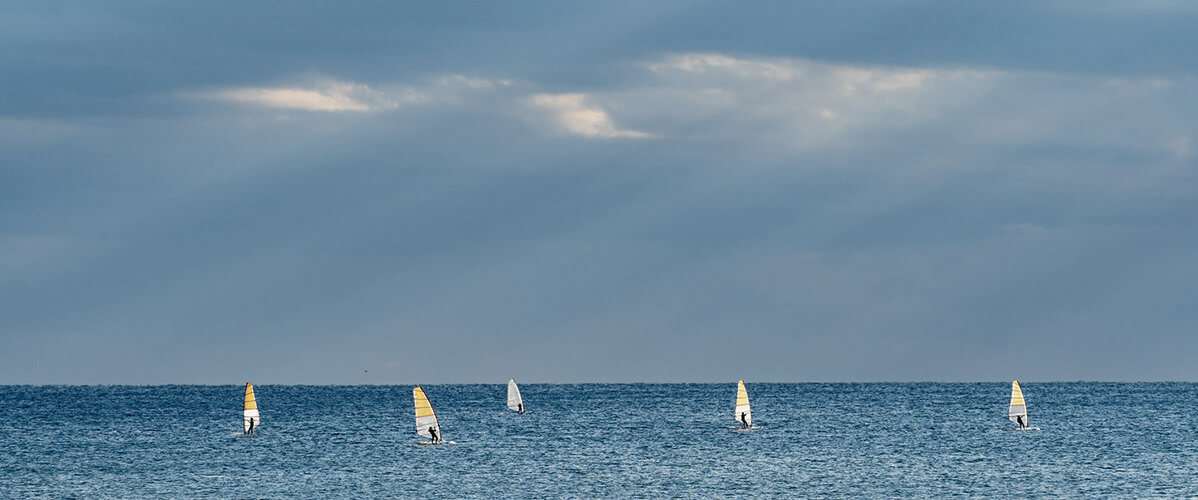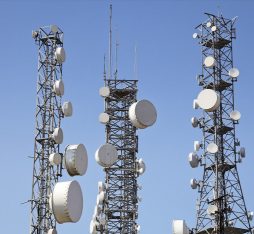The French Windsurf Championships, organised by ASNQ (Association Sportive et Nautique de Quiberon — the Quiberon Sports and Boating Association) at the ENVSN (Ecole Nationale de Voile et des Sports Nautiques — the French national school of water sports) in Saint-Pierre-Quiberon from 1–3 November 2019, were an opportunity to experiment with the deployment and use of a connectivity bubble. It made it possible for us to add a network coverage dedicated to broadcasting an immersive video on the site of the sporting event.
 A connectivity bubble provides on-demand network coverage that can be deployed over any kind of terrain. There is no shortage of needs, such as increasing capacity at mass events, providing post-disaster connectivity or even setting up targeted coverage for emerging countries. Our connectivity bubble was developed based on open-source software components from the OpenAirInterface Software Alliance. Unlike previous techniques based on specialised electronic circuits, in this bubble, signals are processed on a computer. This software is combined with a simplified analogue-to-digital converter and a custom radio frequency chain (amplifiers, filters etc.) carried by a tethered drone (held stationary on the ground by a cable), with power and fibre-optic cables attached, enabling its aerial to reach 30m in height and thereby improve radio coverage. The modularity of the OpenAirInterface software has enabled the modules carried by the drone to be separated from modules on the ground, reducing the weight borne by the drone, with only a 2.5 kg payload on delivery. Despite the relatively low power of the amplifier used, 3 Watts (compared to the average 40 W power on the commercial network), the modest bandwidth of 2×10 MHz (compared to the aggregation of numerous 10 MHz or 20-MHz bands in the commercial network) and the use of a light omnidirectional antenna (compared to the massive sector antennas frequently used in the commercial network), on this radio network based on open source software, we measured significant data rates of up to 1.85 Mbps in the uplink direction and 3.87 Mbps in the downlink direction at a distance of 1.3 km between the user terminal and the antenna. This exceeds all open-source performance results to our knowledge. The power supply along the cable holding the “antenna” drone showed potential for a durable connectivity service of three continuous hours, in accordance with the service requirement.
A connectivity bubble provides on-demand network coverage that can be deployed over any kind of terrain. There is no shortage of needs, such as increasing capacity at mass events, providing post-disaster connectivity or even setting up targeted coverage for emerging countries. Our connectivity bubble was developed based on open-source software components from the OpenAirInterface Software Alliance. Unlike previous techniques based on specialised electronic circuits, in this bubble, signals are processed on a computer. This software is combined with a simplified analogue-to-digital converter and a custom radio frequency chain (amplifiers, filters etc.) carried by a tethered drone (held stationary on the ground by a cable), with power and fibre-optic cables attached, enabling its aerial to reach 30m in height and thereby improve radio coverage. The modularity of the OpenAirInterface software has enabled the modules carried by the drone to be separated from modules on the ground, reducing the weight borne by the drone, with only a 2.5 kg payload on delivery. Despite the relatively low power of the amplifier used, 3 Watts (compared to the average 40 W power on the commercial network), the modest bandwidth of 2×10 MHz (compared to the aggregation of numerous 10 MHz or 20-MHz bands in the commercial network) and the use of a light omnidirectional antenna (compared to the massive sector antennas frequently used in the commercial network), on this radio network based on open source software, we measured significant data rates of up to 1.85 Mbps in the uplink direction and 3.87 Mbps in the downlink direction at a distance of 1.3 km between the user terminal and the antenna. This exceeds all open-source performance results to our knowledge. The power supply along the cable holding the “antenna” drone showed potential for a durable connectivity service of three continuous hours, in accordance with the service requirement.
This connectivity bubble transmitted video streams from a semi-professional omnidirectional camera (6K) to spectators on the ground, in near real-time. In order to capture immersive shots, this camera and a cellular modem were embedded in a mobile drone to film the hot spots of the sea race and retransmit them on the connectivity bubble network. Spectators had virtual reality headsets connected to another cellular router, which let them experience the races as if they were at camera level, with a delay of about 30 seconds.

There was a wealth of meaningful feedback on the experiment. Spectators have repeatedly asked for sound to be added to the immersive image. The experiment highlighted a limitation of the video streaming technology used (HTTP live streaming): It does not provide a way of adapting the code rate to radio conditions and this has proved to be a real hindrance for image quality optimisation. The need to extend the “camera” drone reach was also felt and several ideas were put forward at the event in response to this. From the point of view of the connectivity bubble, the need emerged to better manage certain infrequent but potential use cases in the Open Air Interface software code. We also took note of the fact that the “antenna” drone could carry a heavier load and fly higher than 30 m, which means that we can consider extending its coverage radius in future experiments.
All this feedback shows the extent to which “test and learn”, possible thanks to the flexibility of open source, is the right approach to take when designing future network innovations and networks of the future.





